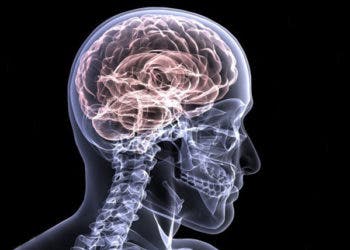A new study found a direct correlation between the frequency of cognitive activity at later life and brain health. As we age, the brain’s structural integrity begins to dwindle, however these effects can be hampered to a certain degree by engaging in intellectual activities like reading, writing or playing chess. Any kind of activity that puts strain on the intellect later on in life will contribute to a healthier brain, the study found.

Konstantinos Arfanakis, Ph.D., and colleagues from Rush University Medical Center and Illinois Institute of Technology in Chicago enlisted 152 elderly participants for their study, mean age 81 years, from the Rush Memory and Aging Project, a large-scale study looking at risk factors for Alzheimer’s disease. All the participants, however, were completely healthy and had no signs of dementia or mild cognitive impairment. The participants were asked to grade from 1 to 5 the frequency with which they participated in a list of mentally engaging activities during the last year.
The participants were then underwent brain MRI using a 1.5-T scanner within one year of clinical evaluation, time in which the scientists looked at a certain factor in particular – diffusion anisotropy, a measure of how water molecules move through the brain. Generally, water molecules travel easier in a direction parallel to the brain’s axon and harder perpendicular to the axons, because it is impeded by structures such as axonal membranes and myelin. By using data gathered from the magnetic resonance imaging (MRI), the researchers were able to map how diffusion anisotropy behaved in each participant.
“This difference in the diffusion rates along different directions increases diffusion anisotropy values,” Dr. Arfanakis said. “Diffusion anisotropy is higher when more diffusion is happening in one direction compared to others.” The anisotropy values in white matter drop, however, with aging, injury and disease.
“In healthy white matter tissue, water can’t move as much in directions perpendicular to the nerve fibers,” Dr. Arfanakis said. “But if, for example, you have lower neuronal density or less myelin, then the water has more freedom to move perpendicular to the fibers, so you would have reduced diffusion anisotropy. Lower diffusion anisotropy values are consistent with aging.”
Thus, a significant associations between the frequency of cognitive activity in later life and higher diffusion anisotropy values in the brain was found. If you think you’re still too young to take note of this kind of information, consider that diffusion anisotropy drops gradually beginning at around age 30. Moreover, it’s good practice to keep engaged in intellectual activities all your life, not only from brain health related reasons alone. Most often, the rewards that come from intellectual stimulation pass their physical sense.
“Several areas throughout the brain, including regions quite important to cognition, showed higher microstructural integrity with more frequent cognitive activity in late life,” said Dr. Arfanakis. “Keeping the brain occupied late in life has positive outcomes.”
“In these participants, we’ve shown an association between late-life cognitive activity and structural integrity, but we haven’t shown that one causes the other,” Dr. Arfanakis said. “We want to follow the same patients over time to demonstrate a causal link.”
Findings were presented at the Radiological Society of North America 2012 Scientific Assembly and Annual Meeting.






